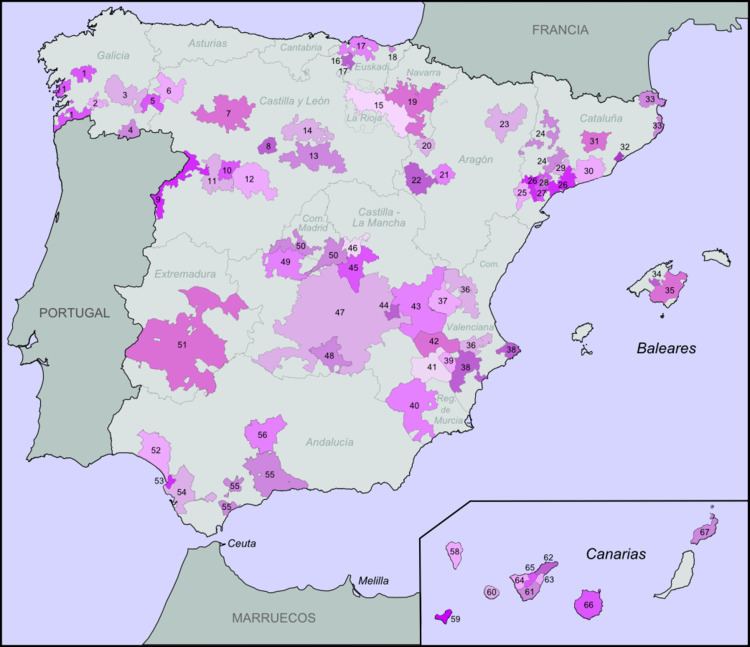The mainstream quality wine regions in Spain are referred to as Denominaciones de Origen (similar to the French Appellations) and the wine they produce is regulated for quality according to specific laws.
In compliance with European Commission Regulation (CE) 753/2002, Spanish wines are classified into two categories, which in turn are further classified into sub-categories depending on the strictness of the criteria applied in producing the type of wine in question:
Quality Wines Produced in a Specified Region (QWPSR) (Vino de Calidad Producido en Región Determinada (VCPRD) in Spanish)
Vino de Pago (VP, formerly also DO de Pago): these wine regions aspire to the very highest standards with extremely strict geographical criteria, centering on individual single-estates with an international reputation. There are currently 14 estates with this status.
Denominación de Origen Calificada (DOCa) (Denominació d'Origen Qualificada (DOQ) in Catalan): regions with a proven track record of consistent quality. There are only two wine regions with this status: Rioja and Priorat.
Denominación de Origen (DO) (Denominació d'Origen in Catalan, Denominación de Orixe in Galician and Jatorrizko Deitura in Basque): mainstream quality-wine regions. There are 66 wine regions with this status.
Vino de Calidad con Indicación Geográfica. A "starter home" for wine regions climbing the quality ladder. There are two wine regions with this status.
Table Wine (Vino de Mesa in Spanish)
Vino de la Tierra (VdlT) "Country wines" which do not have EU QWPSR status but which may use a regional name. There are currently 46 Vino de la Tierra regions in Spain.
Vino de Mesa (Table Wine) is bulk-grown, usually drawn from a wide variety of regions and hence has no vintage or area designation on the label, apart from "Produce of Spain". Production of this low grade of Spanish wine is falling year on year.
In 2006 a new Vino de la Tierra "super-region" was created called Viñedos de España. This was never ratified by the EU, and it was abolished in 2011.
Although almost all wine regions are confined to specific centres of production, some of the top denominaciones (Cava and Rioja in particular) are the product of more than one Autonomous Community. This is in contrast to Vinos de Pago, where the location criteria are very strict indeed, often centering on specific plots of land and admitting only those wines produced in their immediate vicinity.

